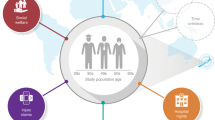Abstract
Background
Socio–economic factors are known to be associated with schizophrenia, but no studies have investigated the effect of inequality on incidence rates of schizophrenia. The aim of the study was to determine whether those electoral wards with greater inequality have a higher incidence of schizophrenia.
Method
An ecological study was carried out involving a retrospective case record study to calculate the incidence of schizophrenia across wards in Camberwell, South London for the period 1988–1997, and an index of inequality within each ward was calculated.
Results
There was no significant effect of inequality overall. However, in the group of deprived wards, the incidence of RDC schizophrenia increased as inequality increased (IRR 3.79, 95 %CI 1.25.11.49 p = 0.019 after adjusting for age, sex, absolute deprivation, ethnicity, proportion of ethnic minorities and the interaction between individual ethnicity and proportion of ethnic minorities.
Conclusion
Increased inequality is associated with increasing incidence of schizophrenia, but only in the most deprived areas. This is independent of other known social risk factors.
Similar content being viewed by others
References
Croudace TJ, Kayne R, Jones PB,Harrison GL (2000) Non-linear relationship between an index of social deprivation, psychiatric admission prevalence and the incidence of psychosis. Psychol Med 30:177–185
Moser K (2001) Inequalities in treated heart disease and mental illness in England and Wales, 1994–1998. Br J Gen Pract 51:438–444
Koppel S, McGuffin P (1999) Socio-economic factors that predict psychiatric admissions at a local level. Psychol Med 29:1235–1241
Wilkinson R (1996) Unequal Societies. The Affliction of Inequality. Routledge, London
Kaplan GA, Pamuk ER, Lynch JW, Cohen RD, Balfour JL (1996) Inequality in income and mortality in the United States: analysis of mortality and potential pathways. BMJ 312:999–1003
Kennedy BP, Kawachi I, Prothrow-Stith D (1996) Income distribution and mortality: cross sectional ecological study of the Robin Hood Index in the United States. BMJ 312:1004–1007
Lynch JW, Kaplan GA, Pamuk ER, Cohen RD, Heck KE, Balfour JL,Yen IH (1998) Income inequality and mortality in metropolitan areas of the United States. Am J Pub Health 88:1074–1080
Diez–Roux AV, Link BG, Northridge ME (2000) A multilevel analysis of income inequality and cardiovascular disease risk factors. Soc Sci Med 50:673–687
Mackenbach JP (2002) Income inequality and population health. BMJ 324:1–2
Weich S, Lewis G, Jenkins SP (2001) Income Inequality and the prevalence of common mental disorders in Britain. Br J Psychiatry 178:222–227
Sturm R,Gresenz CR (2002) Relations of income inequality and family income to chronic medical conditions and mental health disorders: national survey. BMJ 324:20–23
McGuffin P, Farmer A, Harvey I (1991) A polydiagnostic application of operational criteria in studies of psychotic illness. Arch Gen Psychiatry 48:764–770
Spitzer RL, Endicott J, Robins E (1978) Research diagnostic criteria: rationale and reliability. Arch Gen Psychiatry 35:773–782
Williams J, Farmer AE, Ackenheil M, Kaufmann CA, McGuffin P (1996) A multicentre inter-rater reliability study using the OPCRIT computerised diagnostic system. Psychol Med 26:775–783
Department of the Environment Index of Local Conditions. Crown Copyright
Castle D,Wessely S, Der G,Murray RM (1991) The incidence of operationally defined schizophrenia in Camberwell, 1965–84. Br J Psychiatry 159:790–794
Boydell J, van Os J, McKenzie K, Allardyce J, Goel R, McCreadie RG, Murray RM (2001) Incidence of schizophrenia in ethnic minorities in London: ecological study into interactions with environment. BMJ 323:1336–1338
Stata Corporation (1999) STATA Statistical Software, Release 6.0. College Station, Texas
Muler A (2002) Education, income inequality and mortality: a multiple regression analysis. BMJ 324:23–25
Osler M, Prescott E, Gronbaek M, Christensen U, Due P, Engholm G (2002) Income inequality, individual income and mortality in Danish adults: analysis of pooled data from two cohort studies. BMJ 324:13–16
Author information
Authors and Affiliations
Corresponding author
Rights and permissions
About this article
Cite this article
Boydell, ., van Os, ., McKenzie, K. et al. The association of inequality with the incidence of schizophrenia. Soc Psychiatry Psychiatr Epidemiol 39, 597–599 (2004). https://doi.org/10.1007/s00127-004-0789-6
Accepted:
Issue Date:
DOI: https://doi.org/10.1007/s00127-004-0789-6




